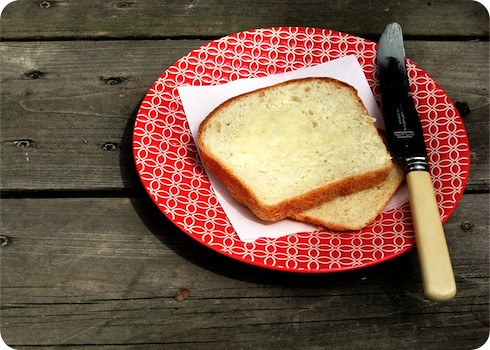
I love a good backyard.
Don't get me wrong, a front yard is a wonderful thing. A front yard, and specifically a good front porch, is the place to watch the world go by. It is see and be seen territory, the perfect vantage point to watch the life of your neighbourhood play out in front of you.
In childhood, a front yard is where you meet your friends. Its the soccer field and the skate park. And, in my personal experience, the backdrop for Barbie-related-dramas.
In University the front yard was home to the living room couch, yanked from its indoor confines and released to the great outdoors. It was the spot to lounge away the first sunny days of the season, preferably with beverage in hand.
After that, my front yard was first a fire escape and then a modest balcony, where we sat drinking "classy" wines and pretended to be worldly.
Now, I survey the front yards on our quiet street, with chalk drawings that tattoo the pavement, the toys and bikes and soccer balls left out on the lawns. Gardening tools are nestled by the front door. A watering can sits, stainless steel and gleaming, jewel-bright. Artifacts of the day's adventures and plans for the days ahead.
From our front step I nod to the neighbours, and Benjamin's own technicolour hieroglyphs decorate the pavement.
But a backyard is a whole other world. Even though it is outside, it feels more intimate, more like an extension of your home. The front yard is about show and the backyard is about substance. It is where we really live out of doors, and where others must be invited to gain entry.
This is only our second summer with our backyard, and were becoming fast friends. Last summer we were occupied with the business of having a baby, so this feels like our first opportunity to truly understand its rhythms; the way the light falls throughout the day, the cycle of plants we've inherited, and the time to revisit the haphazardly-laid plans we made a year ago.
It's got good bones, our backyard does, but is in need of a bit of a facelift. If our yard were in a movie, it would be cast as the "plain" girl who has a messy ponytail and always keeps her head down, the one that is suddenly altogether gorgeous once someone takes the time to look.
Its there. I am sure of it. The possibility of specialness, the promise of nooks and crannies for little boys to find magic, a home for a little vegetable patch, and most surely a hammock. We're almost there, our heads full of plans and with days circled on the calendar devoted to the endeavour.
All of that will come in time, and right now I am more than happy with this space outside we have all to ourselves. The lilac is in bloom, and the leaves that form our summertime roof are slowly beginning to unfurl. There is space to run and crawl and cook and dig and plant. And there is my spot, just a beeline out the back door, four strides at most, at the top of the two stairs that lead down from the deck. Sit down with a snack, and suddenly its a picnic. Stretch out, and your toes can reach the grass.
Julia Child's Homemade White Bread Our Way
Another thing that is almost there is my attempts at making the perfect sandwich bread at home. I have been experimenting away, fiddling with yeast and rising times, with quantities of butter and sugar. Sorry about the wait, but one family can only eat so much bread at a time, and we're not a one bread sort of household.
I have realized that we like our bread plain enough not to overshadow what's put on it, but with enough personality that it is not merely a mode of transport for other ingredients. Right now, this variation on Julia Child's recipe is our usual as far as sandwich-style goes. The longer rise gives more substantial texture, and the reduced amount of yeast is preferable to our tastes. Previous columns regarding sandwich bread are here and here.
Recipe (via Slashfood)
Current changes:
• Use only 1 teaspoon of active dry yeast, allowing the dough to rise for about 2-2 1/2 hours for first rise, or until doubled in size. The second rise time will also be longer, about 90 minutes to 2 hours.
• Use 2 teaspoons of sugar instead of 1 tablespoon.
• Use 6 tablespoons of butter instead of 4 tablespoons.
• I usually dust the tops of the loaves with a bit of flour before baking, and sometimes melt 1 tablespoon of butter to brush on the loaves after the flour.